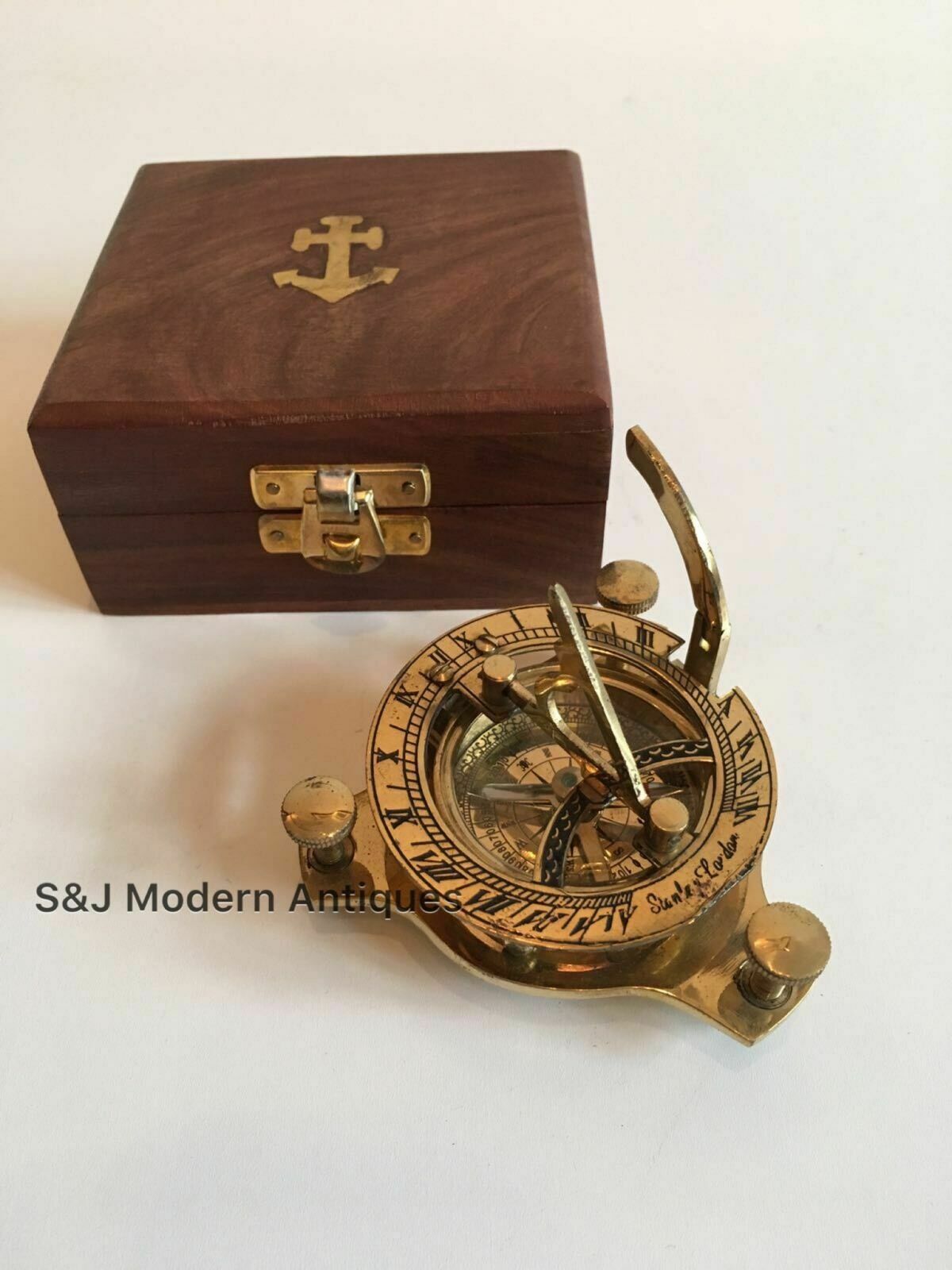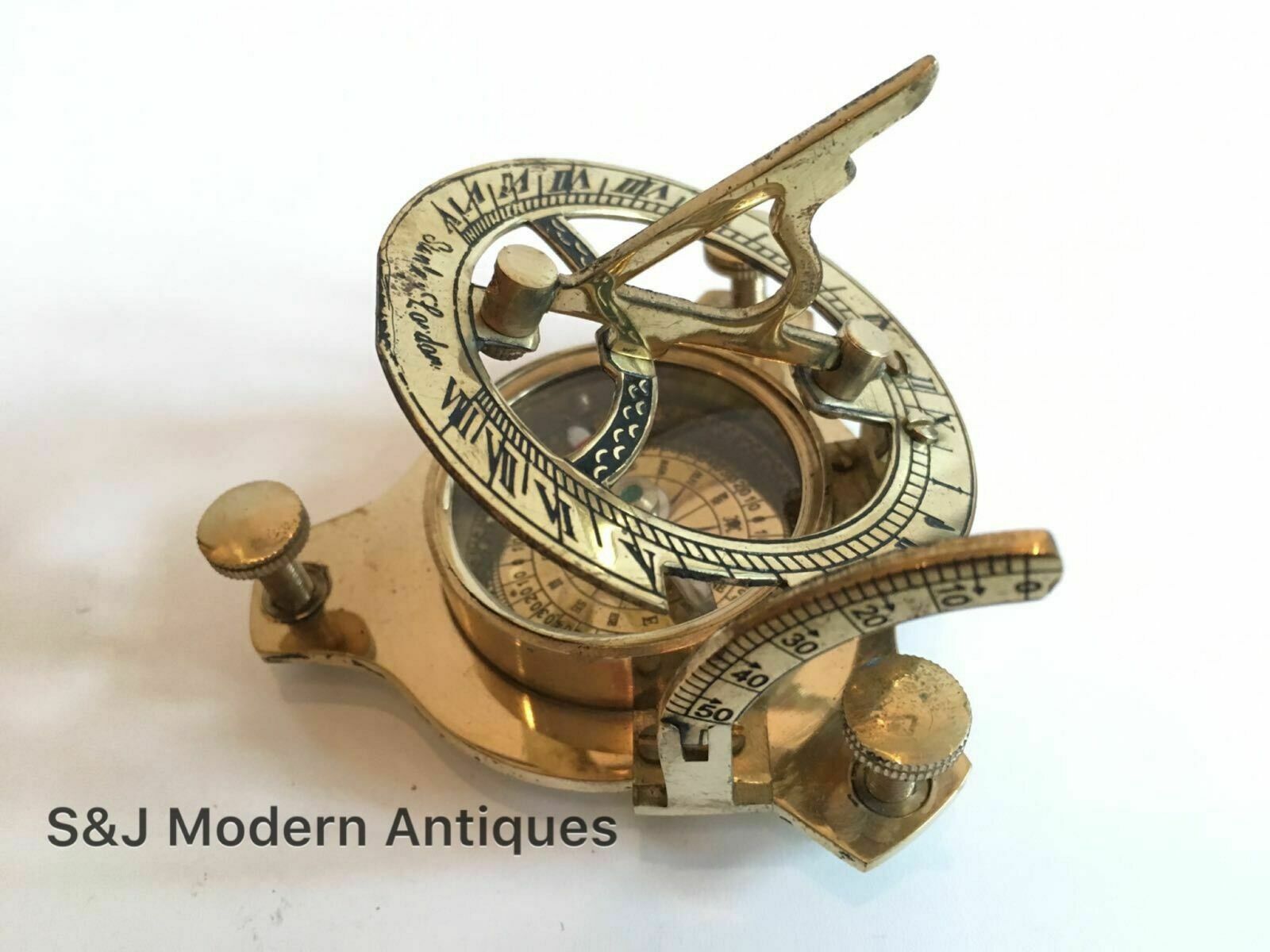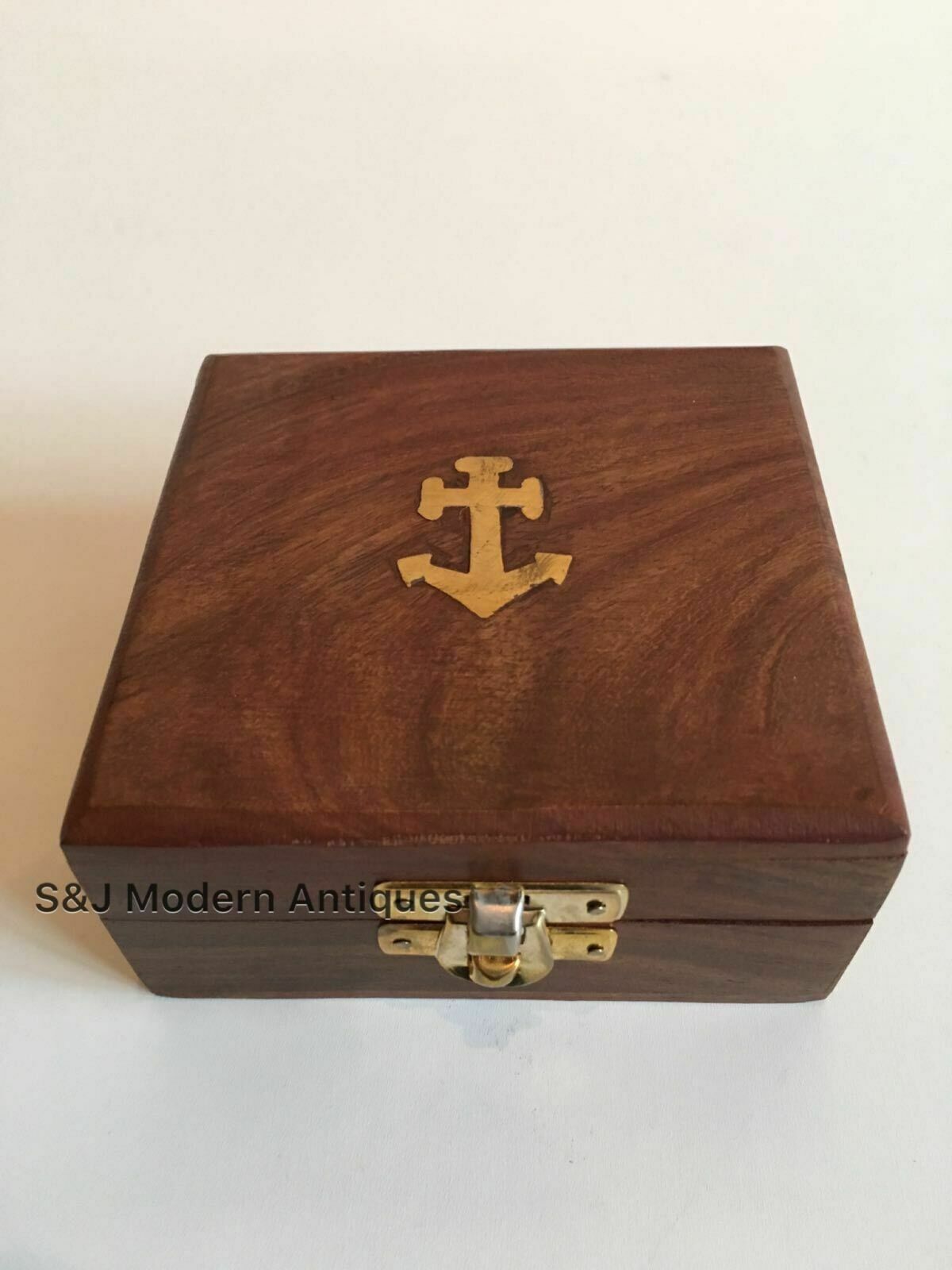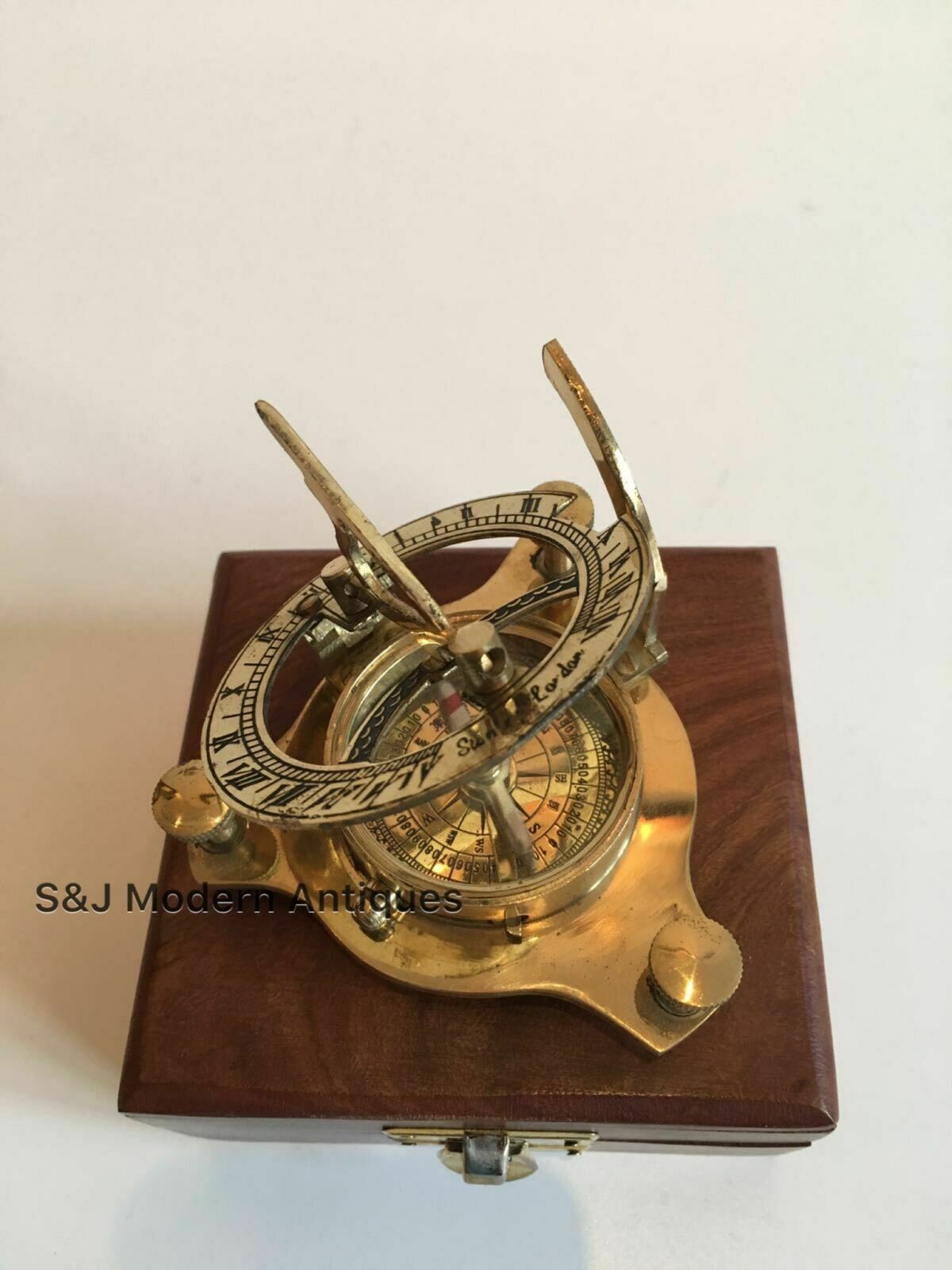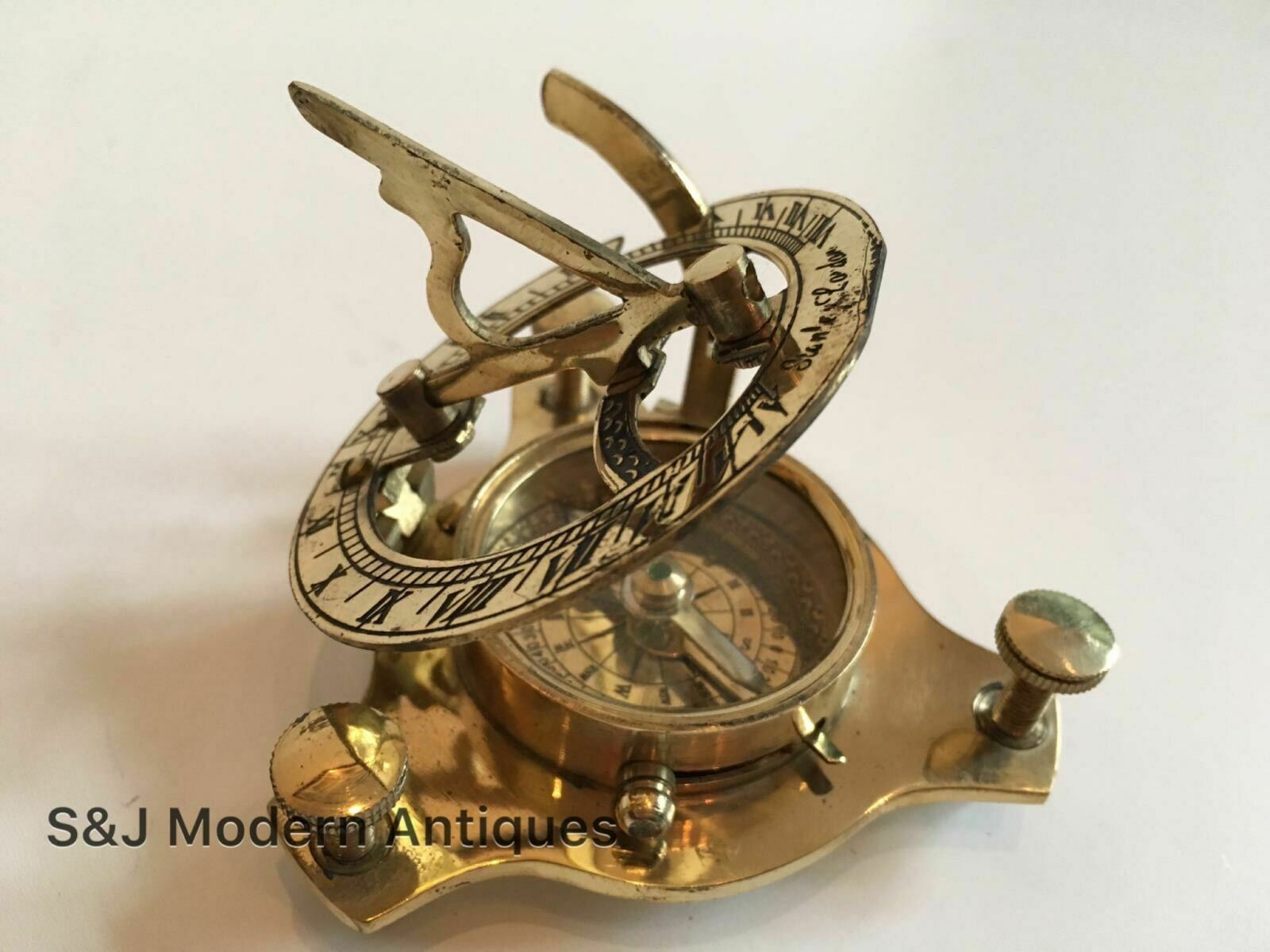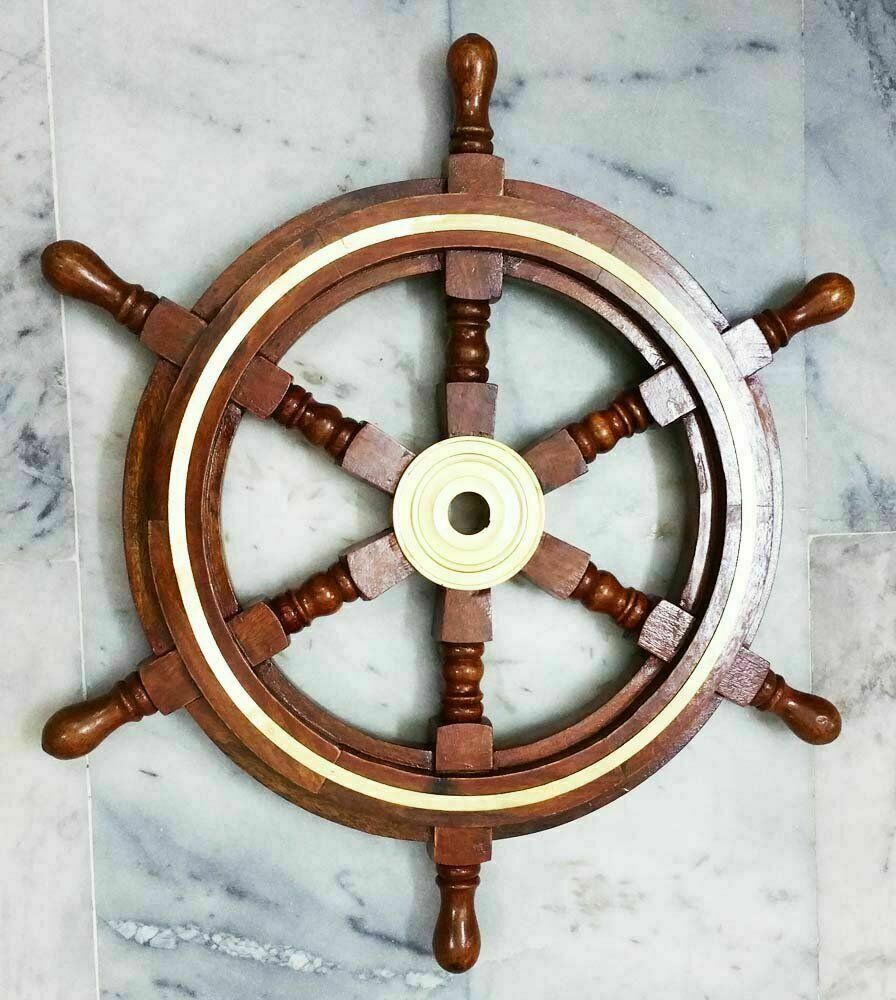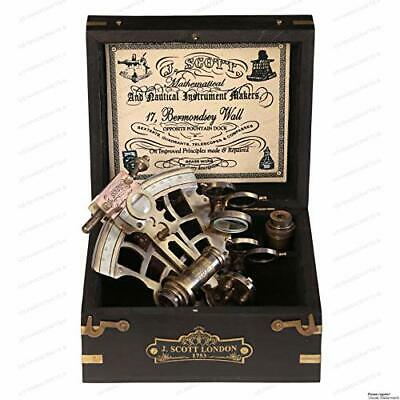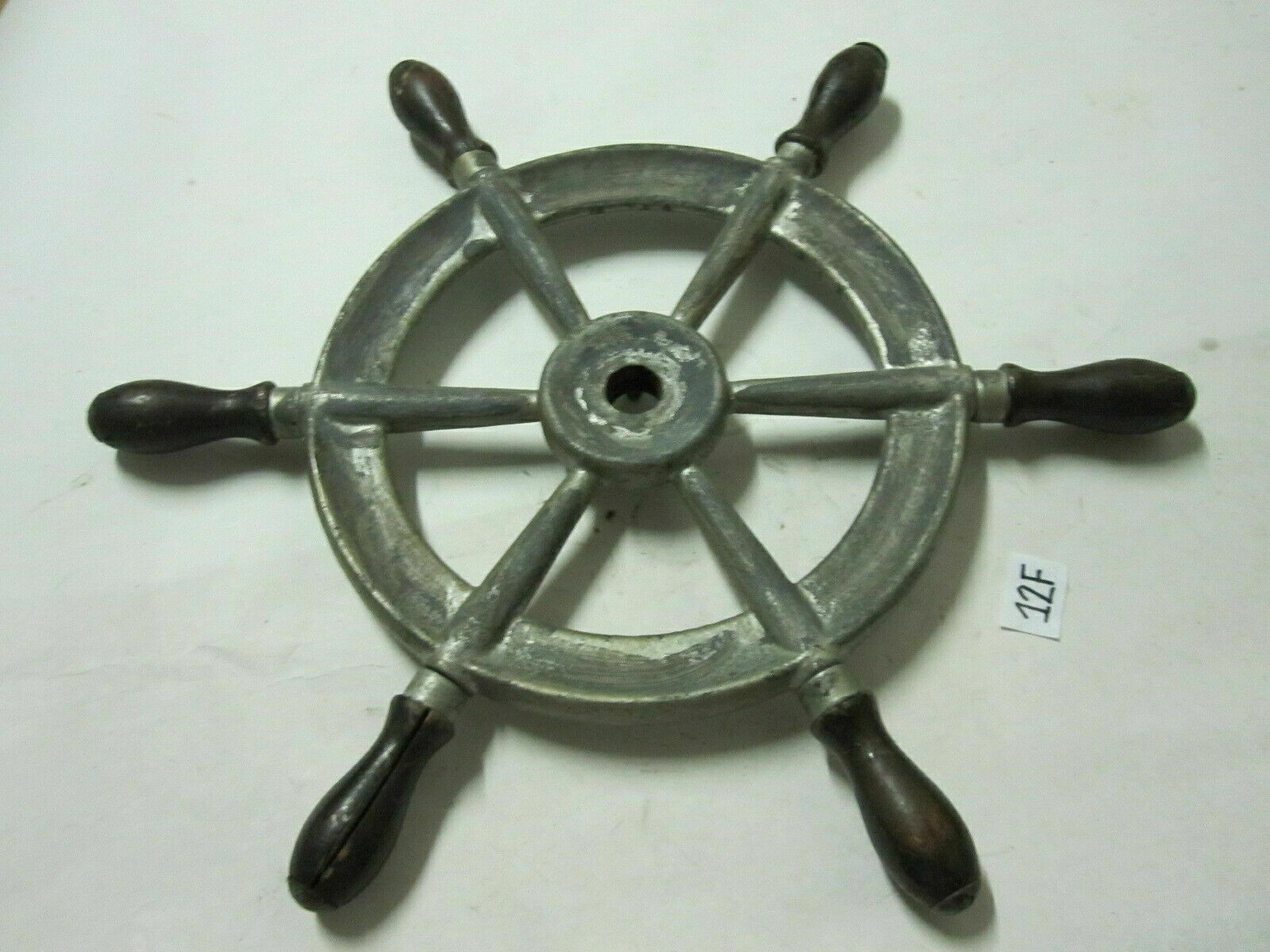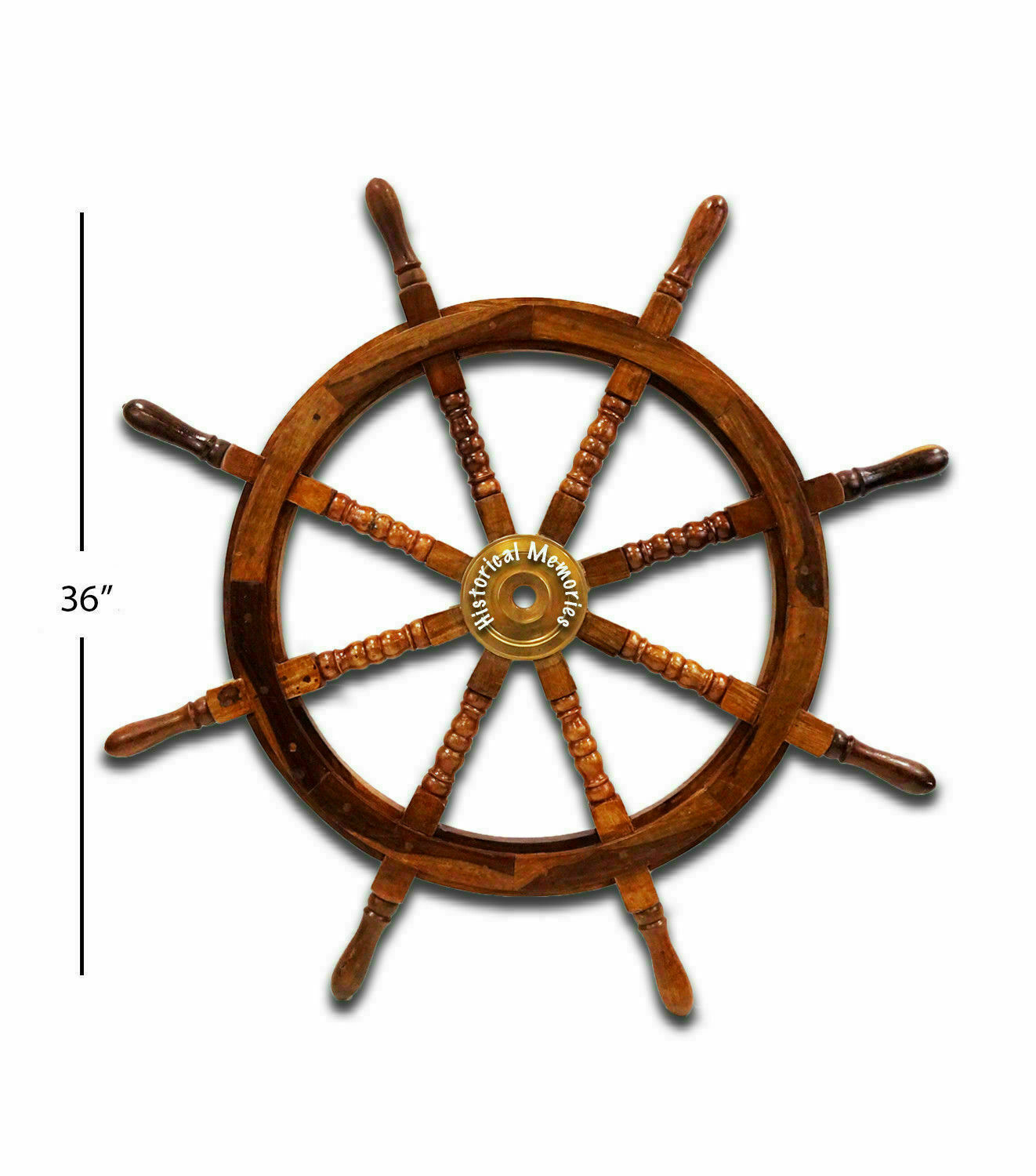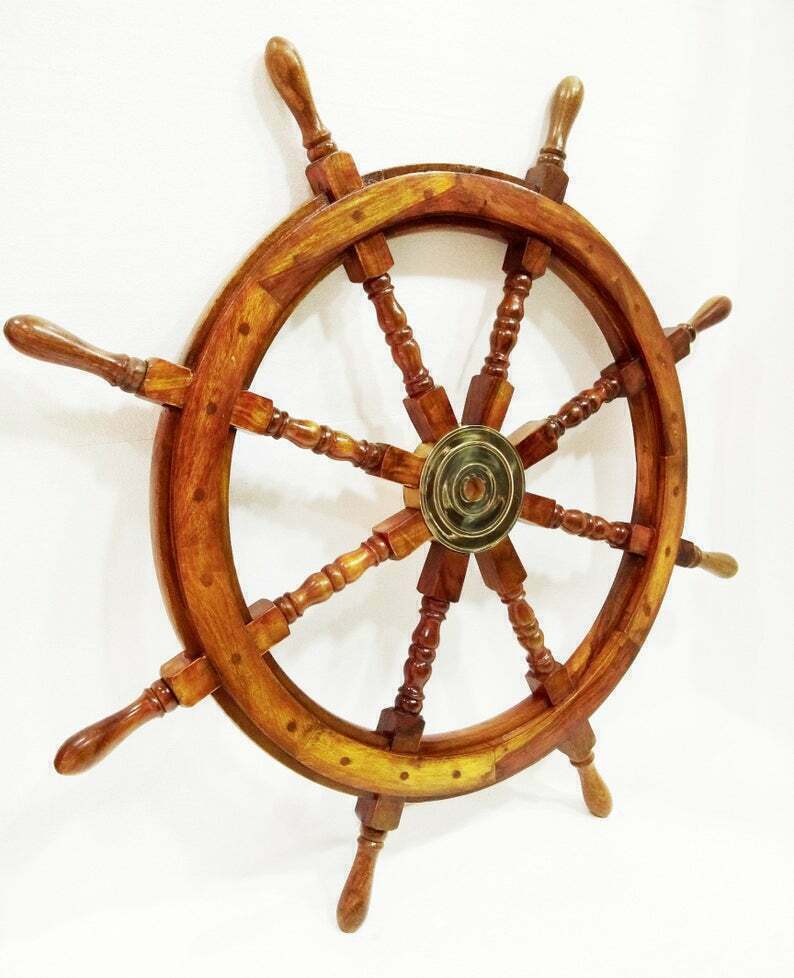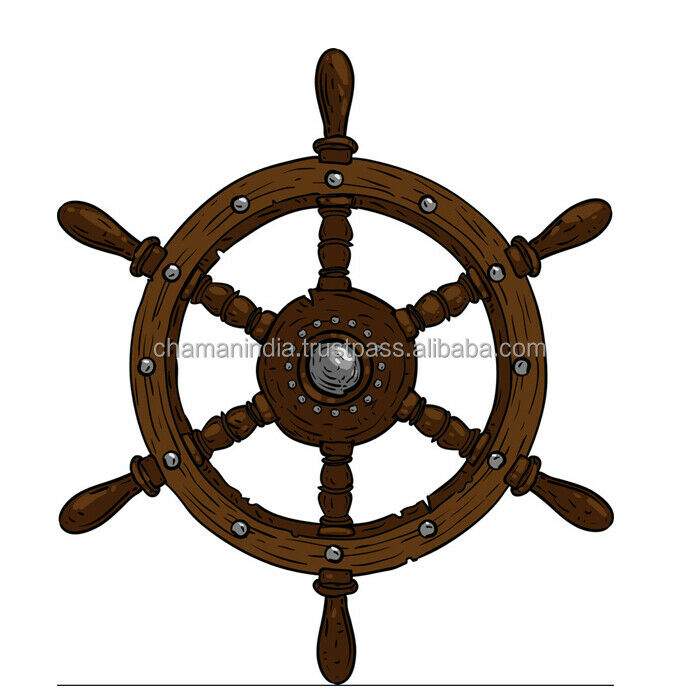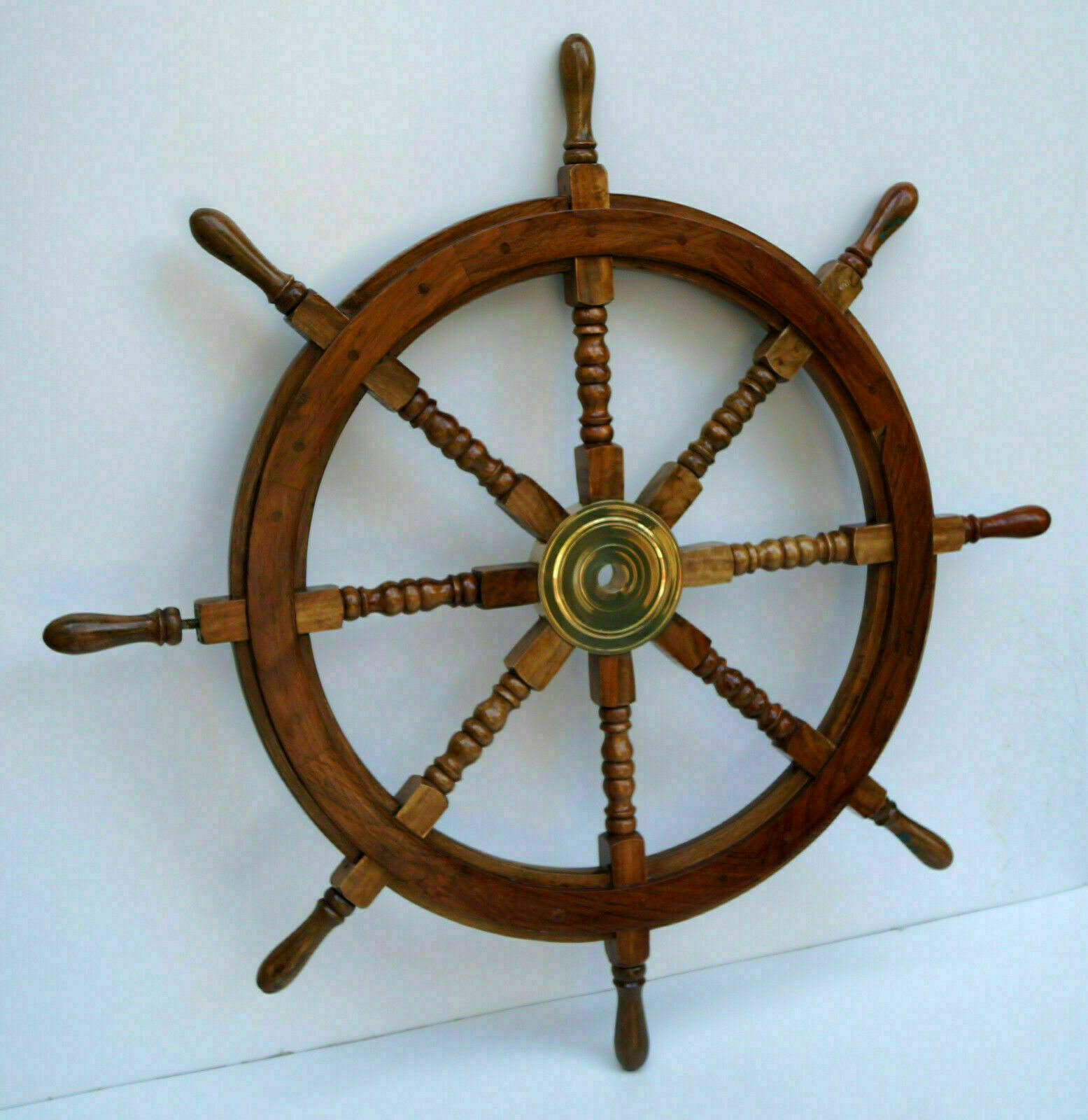-40%
Sundial Compass Vintage Brass Nautical 4" Marine Compasses Steampunk Retro Old
$ 21.85
- Description
- Size Guide
Description
Item specificsSeller Notes:
“
Brand New
”
Object Type:
Compass
Original/Reproduction:
Antique Reproduction
Primary Material:
Brass
Country/Region of Origin:
United Kingdom
Military Branch:
British Royal Navy
featured refinements:
Marine Chronometer
Time Period, War:
WWII
Maker:
Stanley London
New Solid Brass Nautical 4" Sundial Compass in Wooden Teak Box Steampunk Style
Brass Reproduction Sundial Compass - Pocket Sundial with Teak Wooden Box
Manufacturer: West London
Size Approximate Size 6cm X 3cm
With lockable Direction
Due to wood being a natural product the box may vary slightly from that shown in the photos
PLEASE LOOK IN OUR EBAY SHOP FOR LOTS MORE BEAUTIFUL ITEMS AND SAVE US AS A SELLER
Due to any unlikely situation if you wouldn't want to leave a 5 star rating please contact us before leaving feedback.Happy buying
Please note that there may be some slight variation in the box colour and the fittings used, wood is a natural product and this item is hand made
A
compass
is an instrument used for navigation and orientation that shows direction relative to the geographic "cardinal directions", or "points". Usually, a diagram called a compass rose, shows the directions north, south, east, and west as abbreviated initials marked on the compass. When the compass is used, the rose can be aligned with the corresponding geographic directions, so, for example, the "N" mark on the rose really points to the north. Frequently, in addition to the rose or sometimes instead of it, angle markings in degrees are shown on the compass. North corresponds to zero degrees, and the angles increase clockwise, so east is 90 degrees, south is 180, and west is 270. These numbers allow the compass to show azimuths or bearings, which are commonly stated in this notation.
A
sundial
is a device that tells the time of day by the apparent position of the sun in the sky. In the narrowest sense of the word it consists of a flat plate (the
dial
) and a gnomon which casts a shadow onto the dial. As the sun appears to move across the sky, the shadow aligns with different
hour-lines
which are marked on the dial to indicate the time of day. The
style
is the time-telling edge of the gnomon, though a single point or
nodus
may be used. The gnomon casts a broad shadow; the shadow of the style shows the time. The gnomon may be a rod, a wire or an elaborately decorated metal casting. The style must be parallel to the axis of the Earth's rotation for the sundial to be accurate throughout the year. The style's angle from horizontal is equal to the sundial's geographical latitude.
In a broader sense a sundial is any device that uses the sun's altitude and/or azimuth to show the time. In addition to their time-telling function, sundials are valued as decorative objects, as literary metaphors and as objects of mathematical study.
